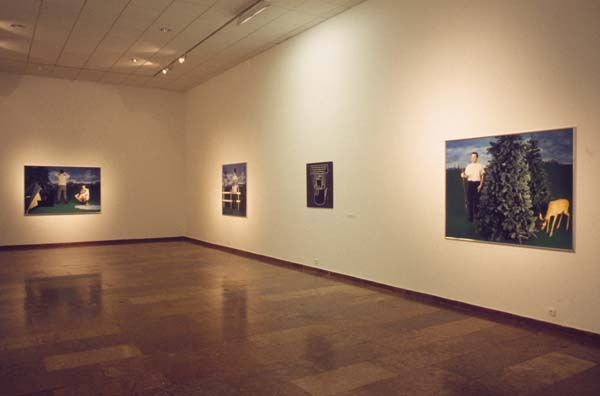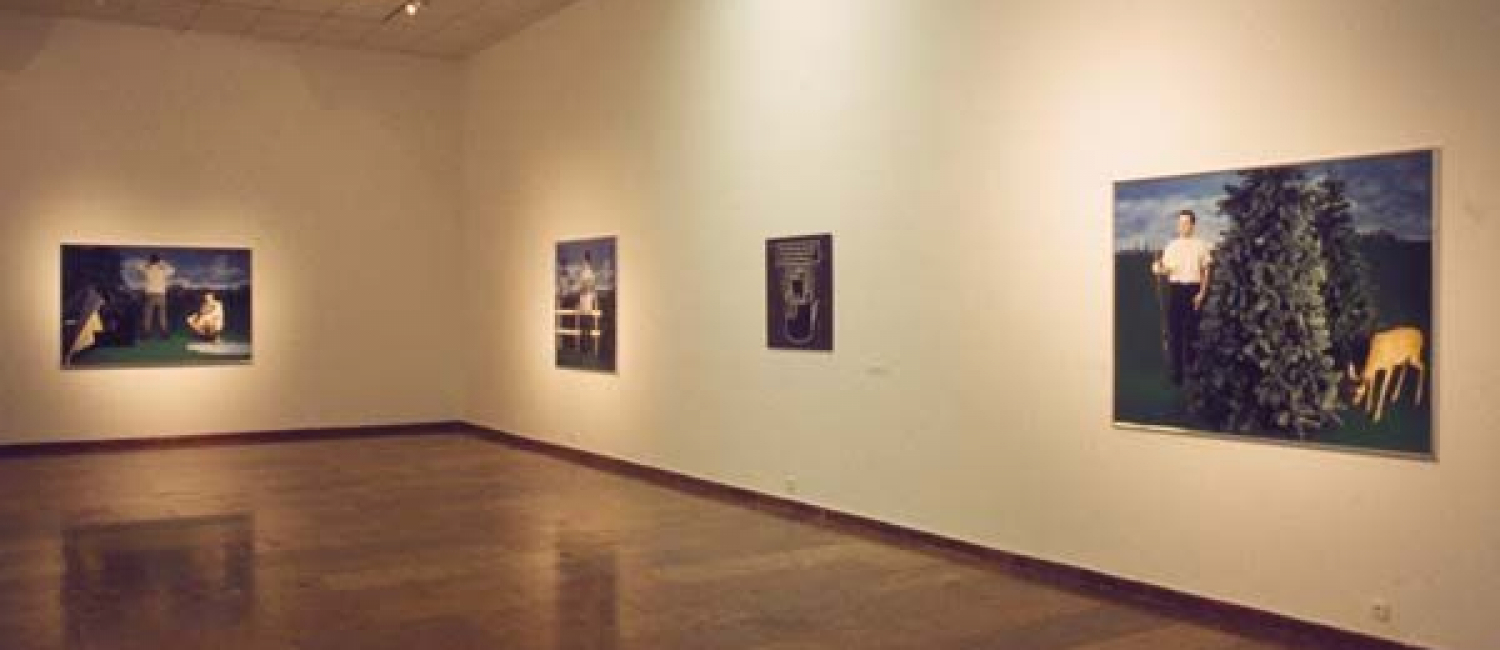From 1996–97, Gábor Gerhes’ interest in photography as an artistic medium is emphasised in his oeuvre. He produces primarily black-and-white photo enlargements and colour computer prints from his photographs taken of posed scenes. His works are based on traditional photography, which he then modifies through digital procedures; he alters certain details, he transforms with computer animation. Photography is a suitable tool, an instrument for the artist that lends itself to the creation of the semblance of an alternative reality in his works.
Gerhes achieves the desired effect with extraordinarily simple compositional means: by the application of classical models, emblematic accentuation, the arrangement of series and the animation of figures distributed over the visual field, his pictures take on an almost material density, realising the installation of the mise-en-scène.
The manipulation of the photo that occurs through the computer – whether or not we can discover its traces in the pictures – results in a new type of reality. The unusual, banal or simply absurd (Z / instructs, 2002) situations depicted in Gerhes’ pictures lead the viewer into uncertainty as regards the authenticity of the portrayed scenes. The veritability or apparent reality of the enigmatic, humorous life situations serves only to emphasise that the works have been made, for the most part, on a traditional visual medium as paper prints.
The aim of his works is the removal of disparity between the reality and manipulated reality. As a consequence, the scene is reinterpreted, and the peculiar, the odd, infiltrates the interpretation.
Gerhes assembles the visual scenery as a constructor, creating a representation of supra-reality exclusively from simple, real visual components. The mysterious reality evoked in the (manipulated) photographs, the raising of the banal to mythic heights, the demonstration of insinuating inscrutability, is not without precedents in the history of photography (Eugene Atget, Ed Ruscha).
The Discovery of the T is, in actual fact, part of a story: it is the logical continuation of a project that began with the works entitled Everyday Task – Genesis, or Addition Gone Wrong, and which addresses the subject raised in the 1999 picture, Planting a letter T. In Gerhes’ more recent pictures, too, fragments of text appear, assembled as objects or similarly to the caption fields of comic-strips – ricocheting experiments that again and again attempt interpretation.
The character appearing in the majority of his works is the artist himself; as a real quick-change artist, he slips into the costume appropriate to the scene at hand, and we can easily spot the recurring props and elements of the set design used in the adapted situations portrayed in the pictures: picket fence, artificial pine tree, representations of letters etc.
Gerhes eliminates the historical image genres when he distances the picture’s iconic genre and the portrayed subject from each other. He combines such traditional image types from fine arts as the landscape, group portrait and the genre painting expressly with the genres employed in photography (studio portrait, photojournalism etc.).
The strength of Gerhes’ pictures is in that phenomenon that invisibly renders them palpable; in that which undermines those visual codes by which his images would otherwise appear false. This is how Gerhes' theatre of artificial reality is transformed into a field where visual information is elevated to the rank of illusion. His mingling of real and hyperreal, nevertheless, is accomplished not as a wild association of ideas, or down a path of electronic simulation, but rather within a framework of artificially constructed reality that reflects the harmony of his purposes.
(József Készman, April 2002)
Curator of the exhibition: Dr. Vera Baksa-Soós

